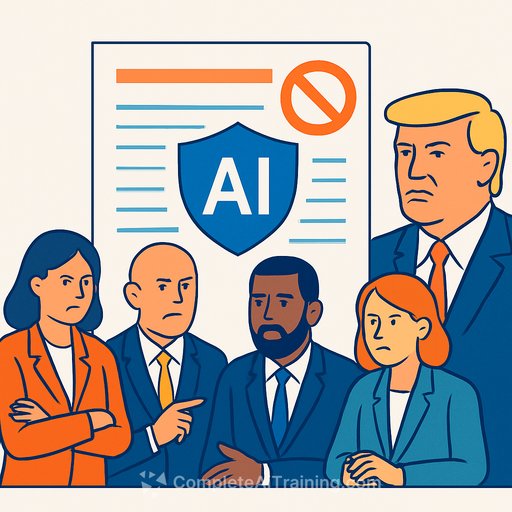AI for Homeowners Insurance: From ZIP Codes to Property-Level Reality
Carriers are pulling out of entire ZIP codes as climate risks stack up. A Utah startup, FutureProof, says that's a blunt response to a nuanced problem-and that AI can keep good risk on book while lowering premiums.
CEO and co-founder Alisa Valderrama outlined the approach at the 2025 Ivory Prize Summit, where FutureProof was named a top 10 finalist. The company plans to expand its own insurance nationwide, including Utah, this year.
The problem with blanket risk assessments
Traditional models rely on broad geographic data. That pushes insurers to exit whole regions instead of pricing individual properties. As Valderrama put it, good risk gets left behind-and the market shrinks for everyone.
FutureProof's pitch: stop using coarse assessments. Train models on policy and claims data, then score the actual property. The outcome is individualized risk, not ZIP-code averages.
How FutureProof says it works
The company trains AI models on comprehensive insurance data and analyzes property-specific features that affect loss probability and severity. If a home sits in a risky zone but has strong defenses, the model aims to reflect that in pricing and eligibility.
According to Valderrama, that level of detail can help win on price against incumbents still rating the whole area the same. It's an underwriting and pricing posture built for mitigation, not just location.
What this means for insurers and brokers
- Shift from ZIP-code underwriting to parcel-level scoring. Use disclosures and third-party data (roof type, vents, defensible space, elevation, retrofits) to drive eligibility and price.
- Make mitigation measurable. Offer credits for verifiable actions (e.g., Firewise practices, ember-resistant vents, Class A roofs, cleared vegetation) and require proof.
- Speed up quoting. With property-level signals, you can enable more precise triage, real-time quoting, and cleaner portfolio management.
- Partnership model. FutureProof Insurance Agency reports partnerships with 20+ carriers to support more precise pricing, risk selection, real-time quoting, and portfolio oversight.
Utah risk snapshot
Utah faces floods, earthquakes, wildfires, and wind events. A single ZIP doesn't tell that full story. Property condition, location on the parcel, construction materials, and mitigation steps do.
What homeowners can do (and how you can guide them)
- Follow Firewise community practices: clear defensible space, harden the perimeter, and maintain it regularly. See NFPA's Firewise USA.
- Wildfire: install ember-resistant vents, upgrade to Class A roofing, remove ladder fuels, and screen openings.
- Flood: elevate utilities, add flood openings where appropriate, improve drainage, and maintain proper grading.
- Earthquake: brace water heaters, secure chimneys, add cripple wall bracing, and consider seismic retrofits.
- Wind: improve roof-to-wall connections, reinforce garage doors, and fix loose or aging roof components.
Park City stakeholders are already pushing education, including a recent webinar hosted with Premiums for the Planet. Expect more local efforts as underwriting tightens.
What's next for AI-driven homeowners insurance
Valderrama says the industry has been slow to adopt property-level pricing at scale, and major carriers aren't there yet. That gap is fueling a wave of startups aiming to price with more granularity.
FutureProof plans to raise $20 million in December to enter select markets with its own products, while continuing partnerships with carriers. The expansion includes Utah this year.
Action items for insurance teams
- Audit your rating plan: identify where ZIP-level surcharges or moratoriums can be replaced with property signals and mitigation credits.
- Tighten data ingestion: collect structured property features at quote, and verify them post-bind with photos, inspections, or trusted data sources.
- Build mitigation loops: quote-to-bind credits contingent on proof; renewal incentives for verified upgrades; loss control that feeds future pricing.
- Portfolio view: segment by peril and mitigation status; use property-level scores to shape aggregation, reinsurance, and appetite.
Want your team fluent in practical AI workflows for pricing, underwriting, and ops? Explore role-based learning paths at Complete AI Training.
Your membership also unlocks:






